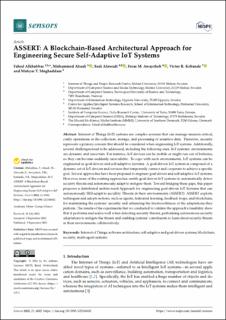| dc.description.abstract | Internet of Things (IoT) systems are complex systems that can manage mission-critical, costly operations or the collection, storage, and processing of sensitive data. Therefore, security represents a primary concern that should be considered when engineering IoT systems. Additionally, several challenges need to be addressed, including the following ones. IoT systems’ environments are dynamic and uncertain. For instance, IoT devices can be mobile or might run out of batteries, so they can become suddenly unavailable. To cope with such environments, IoT systems can be engineered as goal-driven and self-adaptive systems. A goal-driven IoT system is composed of a dynamic set of IoT devices and services that temporarily connect and cooperate to achieve a specific goal. Several approaches have been proposed to engineer goal-driven and self-adaptive IoT systems. However, none of the existing approaches enable goal-driven IoT systems to automatically detect security threats and autonomously adapt to mitigate them. Toward bridging these gaps, this paper proposes a distributed architectural Approach for engineering goal-driven IoT Systems that can autonomously SElf-adapt to secuRity Threats in their environments (ASSERT). ASSERT exploits techniques and adopts notions, such as agents, federated learning, feedback loops, and blockchain, for maintaining the systems’ security and enhancing the trustworthiness of the adaptations they perform. The results of the experiments that we conducted to validate the approach’s feasibility show that it performs and scales well when detecting security threats, performing autonomous security adaptations to mitigate the threats and enabling systems’ constituents to learn about security threats in their environments collaboratively. | en_US |

